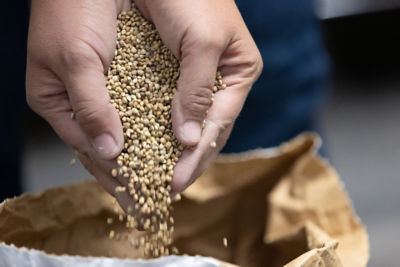Causal Agent
Paratrichodorus allius, P. minor
Distribution
Worldwide
Symptoms
Plants are stunted, turn yellow or may be killed when infection occurs at the seedling stage. Infected root systems develop numerous stubby branches, often in clusters, as a result of nematodes feeding on root tips. Distinctive lesions are not visible; however, discoloration and necrosis will occur on infected roots due to secondary infections by other organisms. The stubby-root nematode is a strictly external feeder and therefore will not be embedded in root tissue like the rootknot nematode.
 Field symptoms.
Field symptoms.
 Stubby-root symptoms, infected (left) and healthy (right).
Stubby-root symptoms, infected (left) and healthy (right).
Conditions for Development
The stubby-root nematode is active at soil temperatures between 20°C (68°F) and 35°C (95°F). Sandy and sandy loam soils favor its reproduction.
Control
Treatment of infested soil with fumigants and nematicides reduces nematode populations. Flooding followed by soil drying can also decrease the population density. Long term rotation to resistant crops may give some control.



